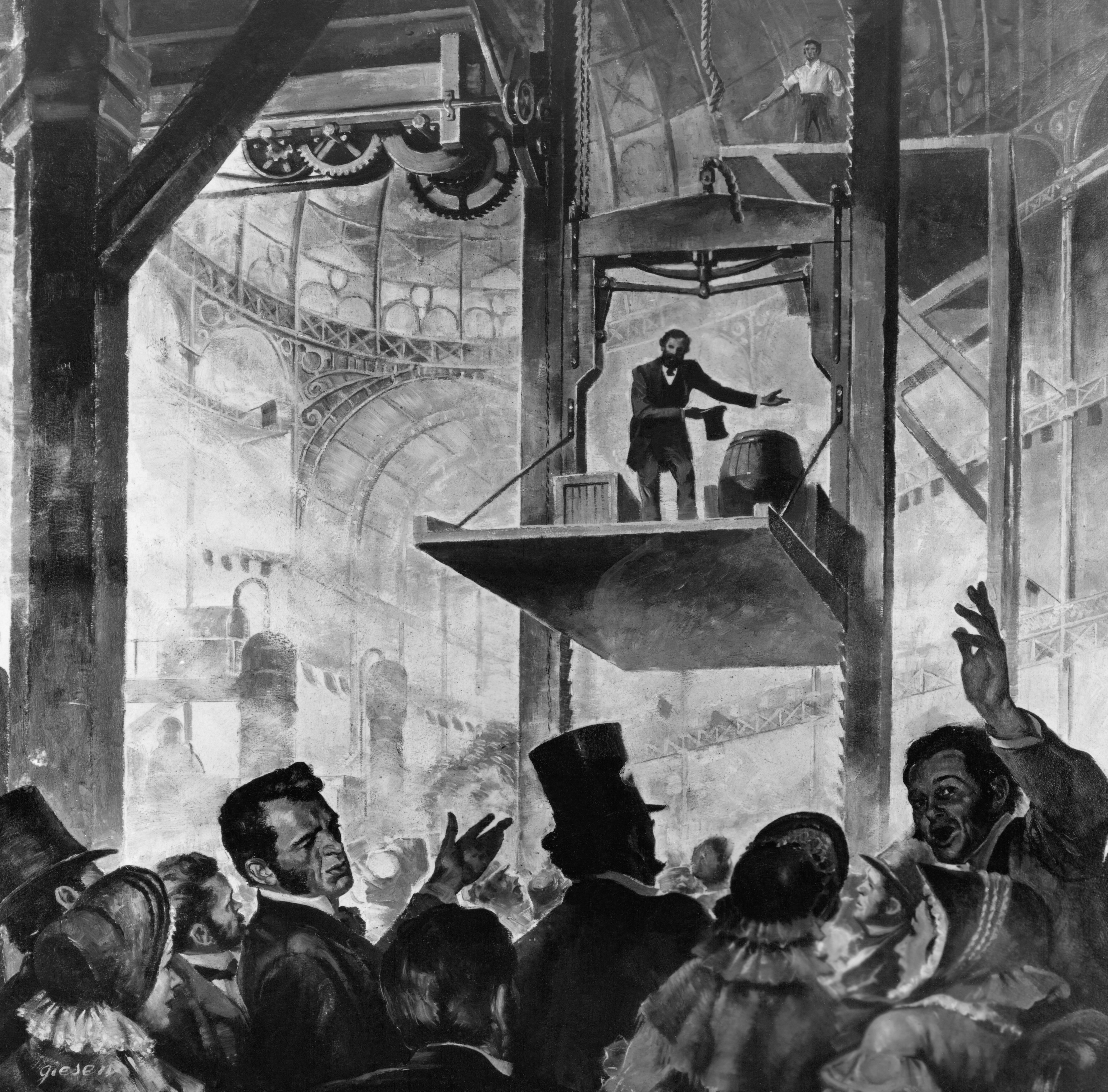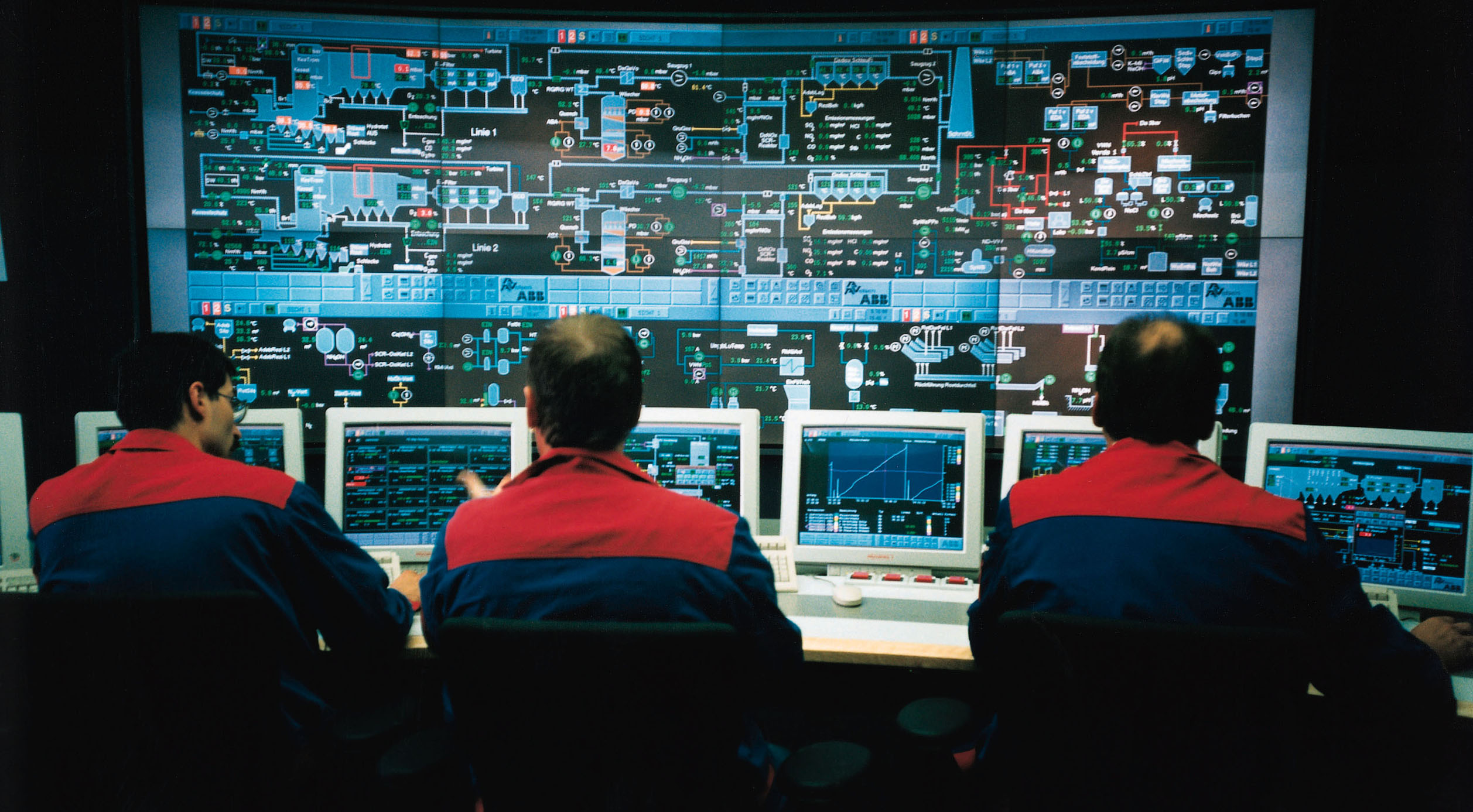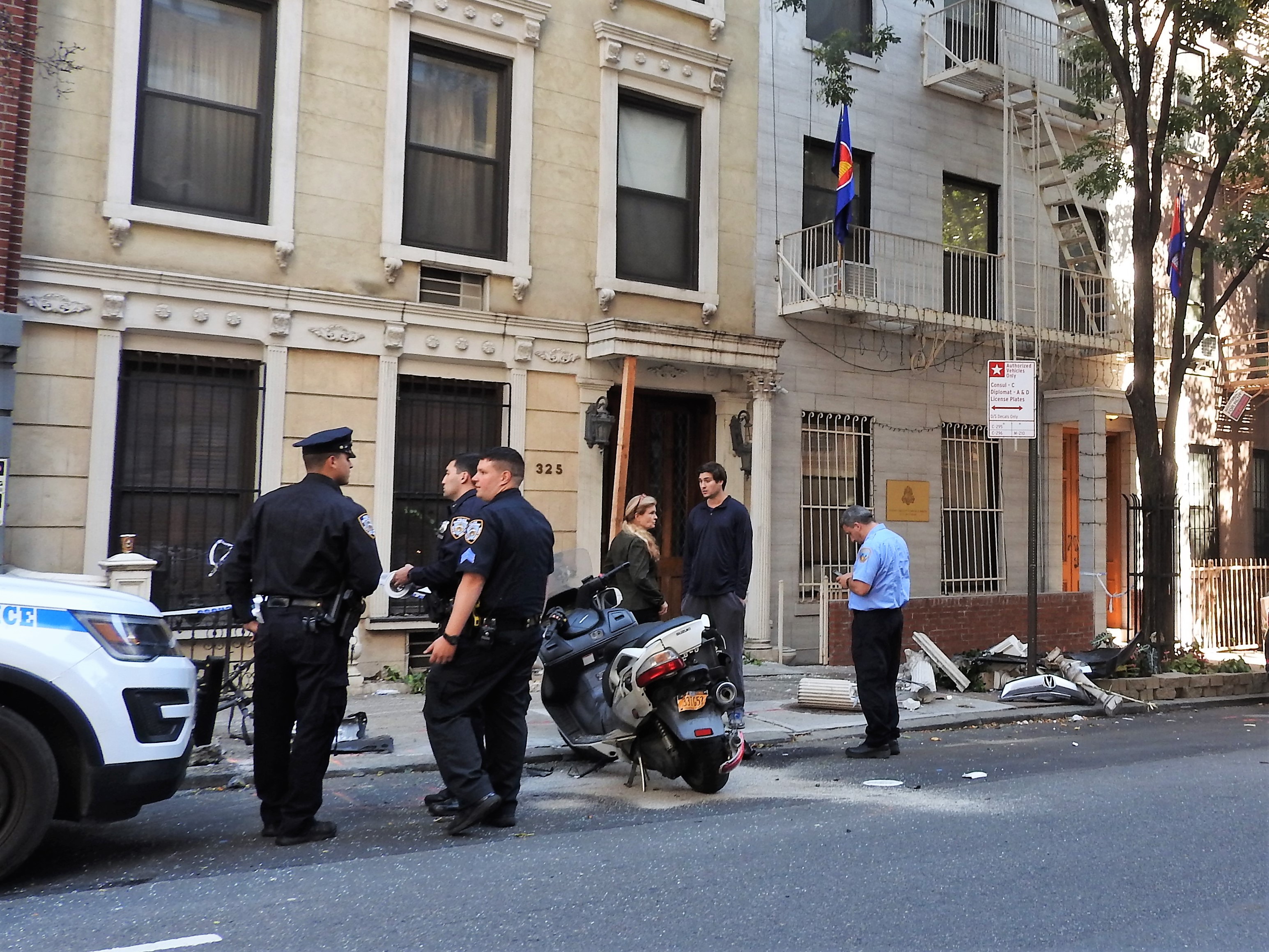|
Life-critical System
A safety-critical system or life-critical system is a system whose failure or malfunction may result in one (or more) of the following outcomes: * death or serious injury to people * loss or severe damage to equipment/property * environmental harm A safety-related system (or sometimes safety-involved system) comprises everything (hardware, software, and human aspects) needed to perform one or more safety functions, in which failure would cause a significant increase in the safety risk for the people or environment involved. Safety-related systems are those that do not have full responsibility for controlling hazards such as loss of life, severe injury or severe environmental damage. The malfunction of a safety-involved system would only be that hazardous in conjunction with the failure of other systems or human error. Some safety organizations provide guidance on safety-related systems, for example the Health and Safety Executive in the United Kingdom. Risks of this sort are u ... [...More Info...] [...Related Items...] OR: [Wikipedia] [Google] [Baidu] |
Glass Cockpit
A glass cockpit is an aircraft cockpit that features an array of electronic (digital) flight instrument display device, displays, typically large liquid-crystal display, LCD screens, rather than traditional Analog device, analog dials and gauges. While a traditional cockpit relies on numerous mechanical gauges (nicknamed "steam gauges") to display information, a glass cockpit uses several multi-function displays and a primary flight display driven by flight management systems, that can be adjusted to show flight information as needed. This simplifies aircraft operation and navigation and allows aviator, pilots to focus only on the most pertinent information. They are also popular with airline companies as they usually eliminate the need for a flight engineer, saving costs. In recent years the technology has also become widely available in small aircraft. As aircraft displays have modernized, the sensors that feed them have modernized as well. Traditional gyroscope, gyroscopic fli ... [...More Info...] [...Related Items...] OR: [Wikipedia] [Google] [Baidu] |
Computer System
A computer is a machine that can be programmed to automatically carry out sequences of arithmetic or logical operations (''computation''). Modern digital electronic computers can perform generic sets of operations known as ''programs'', which enable computers to perform a wide range of tasks. The term computer system may refer to a nominally complete computer that includes the hardware, operating system, software, and peripheral equipment needed and used for full operation; or to a group of computers that are linked and function together, such as a computer network or computer cluster. A broad range of industrial and consumer products use computers as control systems, including simple special-purpose devices like microwave ovens and remote controls, and factory devices like industrial robots. Computers are at the core of general-purpose devices such as personal computers and mobile devices such as smartphones. Computers power the Internet, which links billions of compute ... [...More Info...] [...Related Items...] OR: [Wikipedia] [Google] [Baidu] |
Nuclear Weapon
A nuclear weapon is an explosive device that derives its destructive force from nuclear reactions, either fission (fission or atomic bomb) or a combination of fission and fusion reactions (thermonuclear weapon), producing a nuclear explosion. Both bomb types release large quantities of energy from relatively small amounts of matter. Nuclear bombs have had yields between 10 tons (the W54) and 50 megatons for the Tsar Bomba (see TNT equivalent). Yields in the low kilotons can devastate cities. A thermonuclear weapon weighing as little as can release energy equal to more than 1.2 megatons of TNT (5.0 PJ). Apart from the blast, effects of nuclear weapons include firestorms, extreme heat and ionizing radiation, radioactive nuclear fallout, an electromagnetic pulse, and a radar blackout. The first nuclear weapons were developed by the Allied Manhattan Project during World War II. Their production continues to require a large scientific and industrial complex, pr ... [...More Info...] [...Related Items...] OR: [Wikipedia] [Google] [Baidu] |
Passive Nuclear Safety
Passive nuclear safety is a design approach for safety features, implemented in a nuclear reactor, that does not require any active intervention on the part of the operator or electrical/electronic feedback in order to bring the reactor to a safe shutdown state, in the event of a particular type of emergency (usually overheating resulting from a loss of coolant or loss of coolant flow). Such design features tend to rely on the engineering of components such that their predicted behaviour would slow down, rather than accelerate the deterioration of the reactor state; they typically take advantage of natural forces or phenomena such as gravity, buoyancy, pressure differences, conduction or natural heat convection to accomplish safety functions without requiring an active power source. Many older common reactor designs use passive safety systems to a limited extent, rather, relying on active safety systems such as diesel-powered motors. Some newer reactor designs feature more passiv ... [...More Info...] [...Related Items...] OR: [Wikipedia] [Google] [Baidu] |
Thermostat
A thermostat is a regulating device component which senses the temperature of a physical system and performs actions so that the system's temperature is maintained near a desired setpoint. Thermostats are used in any device or system that heats or cools to a setpoint temperature. Examples include building heating, central heating, air conditioners, HVAC systems, water heaters, as well as kitchen equipment including ovens and refrigerators and medical and scientific incubators. In scientific literature, these devices are often broadly classified as thermostatically controlled loads (TCLs). Thermostatically controlled loads comprise roughly 50% of the overall electricity demand in the United States. A thermostat operates as a "closed loop" control device, as it seeks to reduce the error between the desired and measured temperatures. Sometimes a thermostat combines both the sensing and control action elements of a controlled system, such as in an automotive thermostat ... [...More Info...] [...Related Items...] OR: [Wikipedia] [Google] [Baidu] |
Elevator
An elevator (American English) or lift (Commonwealth English) is a machine that vertically transports people or freight between levels. They are typically powered by electric motors that drive traction cables and counterweight systems such as a hoist, although some pump hydraulic fluid to raise a cylindrical piston like a jack. Elevators are used in agriculture and manufacturing to lift materials. There are various types, like chain and bucket elevators, grain augers, and hay elevators. Modern buildings often have elevators to ensure accessibility, especially where ramps aren't feasible. High-speed elevators are common in skyscrapers. Some elevators can even move horizontally. History Pre-industrial era The earliest known reference to an elevator is in the works of the Roman architect Vitruvius, who reported that Archimedes ( – ) built his first elevator probably in 236 BC. Sources from later periods mention elevators as cabs on a hemp rope, powered by people o ... [...More Info...] [...Related Items...] OR: [Wikipedia] [Google] [Baidu] |
Control Systems
A control system manages, commands, directs, or regulates the behavior of other devices or systems using control loops. It can range from a single home heating controller using a thermostat controlling a domestic boiler to large industrial control systems which are used for controlling Process (engineering), processes or machines. The control systems are designed via control engineering process. For continuously modulated control, a feedback controller is used to automatically control a process or operation. The control system compares the value or status of the process variable (PV) being controlled with the desired value or Setpoint (control system), setpoint (SP), and applies the difference as a control signal to bring the process variable output of the Plant (control theory), plant to the same value as the setpoint. For Sequential logic, sequential and combinational logic, software logic, such as in a programmable logic controller, is used. Open-loop and closed-loop co ... [...More Info...] [...Related Items...] OR: [Wikipedia] [Google] [Baidu] |
John Wiley & Sons
John Wiley & Sons, Inc., commonly known as Wiley (), is an American Multinational corporation, multinational Publishing, publishing company that focuses on academic publishing and instructional materials. The company was founded in 1807 and produces books, Academic journal, journals, and encyclopedias, in print and electronically, as well as online products and services, training materials, and educational materials for undergraduate, graduate, and continuing education students. History The company was established in 1807 when Charles Wiley opened a print shop in Manhattan. The company was the publisher of 19th century American literary figures like James Fenimore Cooper, Washington Irving, Herman Melville, and Edgar Allan Poe, as well as of legal, religious, and other non-fiction titles. The firm took its current name in 1865. Wiley later shifted its focus to scientific, Technology, technical, and engineering subject areas, abandoning its literary interests. Wiley's son Joh ... [...More Info...] [...Related Items...] OR: [Wikipedia] [Google] [Baidu] |
AIChE
The American Institute of Chemical Engineers (AIChE) is a professional organization for chemical engineers. AIChE was established in 1908 to distinguish chemical engineers as professionals independent of chemists and mechanical engineers. Currently, AIChE has over 60,000 members from over 110 countriesAbout the AIChE, Overview (from the AIChE website) or 40,000 members from 93 countries. by 2024 (sources vary). There are over 350 active student chapters at universities worldwide. Student chapters aim to provide networking opportunities in academia and industry as well as increase student involvement locally and nationally. History of formation :''This section consists of excerpts from a historical pamphlet written for the Silver Anniversary of the AICHE in 1932.''[...More Info...] [...Related Items...] OR: [Wikipedia] [Google] [Baidu] |
Energy Institute
The Energy Institute (EI) is a professional organization for engineers and other professionals in energy-related fields. The EI was formed in 2003 by the merger of the Institute of Petroleum (dating back to 1913) and the Institute of Energy (dating back to 1925). It has an international membership of about 20,000 people and 200 companies. Its main office is at 61 New Cavendish Street, London. EI is a registered charity with a Royal Charter. In the United Kingdom, EI has the authority to establish professional registration for the titles of Chartered Engineer, Incorporated Engineer, and Engineering Technician, as a licensed member institution of the Engineering Council. It is also licensed by the Society for the Environment to award Chartered Environmentalist status. Formation In 2003 the Institute of Petroleum and the Institute of Energy merged to form the Energy Institute. The offices of the Institute of Petroleum became the offices of the combined organization, and the off ... [...More Info...] [...Related Items...] OR: [Wikipedia] [Google] [Baidu] |
Accident Analysis
Accident analysis is a process carried out in order to determine the cause or causes of an accident (that can result in single or multiple outcomes) so as to prevent further accidents of a similar kind. It is part of ''accident investigation or incident investigation .'' These analyses may be performed by a range of experts, including forensic scientists, Forensic engineering#Forensic engineering, forensic engineers or health and safety advisers. Accident investigators, particularly those in the aircraft industry, are colloquially known as "tin-kickers". Health and safety and patient safety professionals prefer using the term "incident" in place of the term "accident". Its retrospective nature means that accident analysis is primarily an exercise of directed explanation; conducted using the theories or methods the analyst has to hand, which directs the way in which the events, aspects, or features of accident phenomena are highlighted and explained. These analyses are also invaluabl ... [...More Info...] [...Related Items...] OR: [Wikipedia] [Google] [Baidu] |
Asset Integrity Management Systems
Asset Integrity Management Systems (AIMS) outline the ability of an asset to perform its required function effectively and efficiently whilst protecting health, safety and the environment and the means of ensuring that the people, systems, processes, and resources that deliver integrity are in place, in use and will perform when required over the whole life-cycle of the asset. The technical aspects of AIMS are illustrated in Figure 1. Originally developed in the UK, Asset Integrity Management was the result of a collaboration between the HSE and leading oil and gas operators resulting in a series of reports (Belfry Report) and workshops, the outcome being a group of documents called Key Programmes (KP Series), currently publicly available. An Integrity Management System should address the quality at every stage of the asset life cycle, from the design of new facilities to maintenance management to decommissioning. Inspections, auditing/assurance and overall quality processes a ... [...More Info...] [...Related Items...] OR: [Wikipedia] [Google] [Baidu] |






